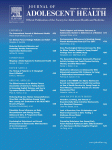Abstract:
Context: Youth exposure to explicit film violence and sex is linked to adverse health outcomes and is a serious public health concern. The Motion Picture Association of America’s (MPAA’s) rating system’s effectiveness in reducing youth exposure to harmful content has been questioned.
Purpose: To determine the MPAA’s rating system’s effectiveness in screening explicit violence and sex since the system’s initiation (1968) and the introduction of the PG-13 category (1984). Also, to examine evidence of less restrictive ratings over time (“ratings creep”).
Design: Top-grossing movies from 1950 to 2006 (N = 855) were coded for explicitness of violent and sexual content. Trends in rating assignments and in the content of different rating categories since 1968 were assessed.
Results: The explicitness of violent and sexual content significantly increased following the rating system’s initiation. The system did not differentiate violent content as well as sexual content, and ratings creep was only evident for violent films. Explicit violence in R-rated films increased, while films that would previously have been rated R were increasingly assigned to PG-13. This pattern was not evident for sex; only R-rated films exhibited higher levels of explicit sex compared to preratings period.
Conclusions: While relatively effective for screening explicit sex, the rating system has allowed increasingly violent content into PG-13 films, thereby increasing youth access to more harmful content. Assignment of films in the current rating system should be more sensitive to the link between violent media exposure and youth violence.
Authors
- Patrick E. Jamieson
- Priya G. Nalkur
- Daniel Romer



